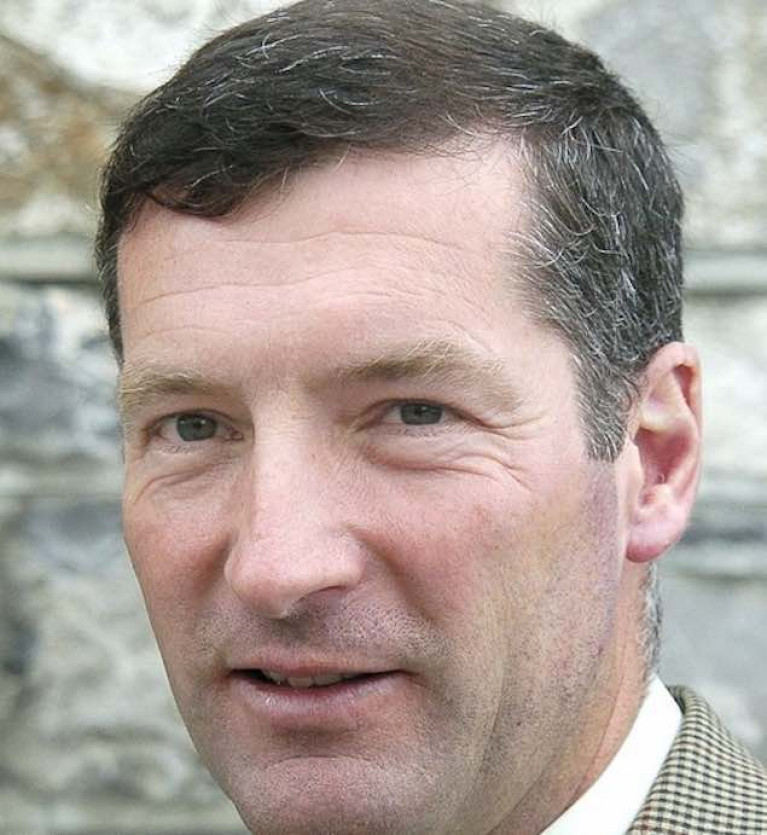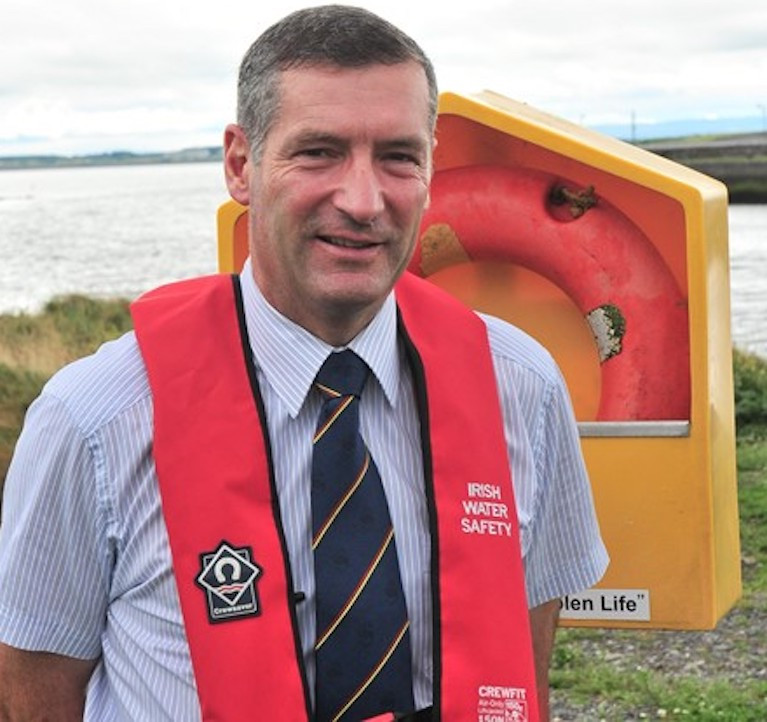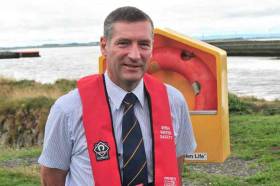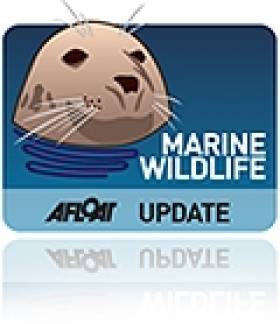Displaying items by tag: John Leech
Chief Executive of Water Safety Ireland Retires
The Chief Executive of Water Safety Ireland, the State organisation headquartered in Galway, has retired. John Leech had been CEO for 21 years.
“When I joined the organisation the 10-year annual average of fatal drownings was 185, today it is 115 and thankfully the trend is downward,” he said on announcing is retirement.
“Our membership was less than 1,000 whilst today it is over 5,500. In terms of lifesaving sport we had two weekends of sport each year. We now have 22 or 23 competitions each year and we had no vehicles, boats craft or buildings, WSI now has lots of equipment, boats, buildings, vehicles now to enable it to run training programmes and sports competitions.”
Before joining Water Safety Ireland he had served with the Navy as a Lt.Commander and was involved in developing the Naval Service Diving Unit.
Water Safety Ireland is a statutory, voluntary body and registered charity established to promote water safety and reduce drownings in Ireland.
Irish people are more likely to take water safety seriously if it doesn’t involve obeying a law.
As The Sunday Independent reports, almost two decades after wearing a lifejacket first became compulsory in Ireland, legislation has proved so unenforceable that there have only been a handful of prosecutions.
However, Ireland is still at the top of the league table in lifejacket use, according to Water Safety Ireland (WSI) chief executive John Leech.
Educational campaigns, rather than legislation, may be the main reason for compliance at an average of over 80 per cent, Leech says.
Wearing lifejackets on the decks of fishing vessels became law in 2002 under a statutory instrument introduced by former Fianna Fáíl marine minister Frank Fahey.
Children up to the age of 16 years on mechanically-propelled pleasure craft, jetski operators and certain categories of commercial passenger boats were also covered by the initial legislation.
However, in 2003, then marine minister Dermot Ahern said that he would be extending mandatory wearing of lifejackets to everyone except surfers and oars people involved in competitive rowing.
The previous year, five people lost their lives in the Pisces angling boat accident off Fethard-on-Sea, Co Wexford. None of the victims had been wearing any sort of flotation device.
When the Pleasure Craft (Personnel Flotation Devices and Operation( Safety) Regulations came into effect in 2005, the Garda were automatically empowered to implement them, and other officers could be authorised by the relevant minister and other bodies including a harbour authority.
The 2005 regulations required that there must be suitable PFDs/lifejackets for everyone on board any pleasure craft of any length.
The regulations also required that PFDs must be worn by anyone on board an open craft or on the deck of a craft under seven metres (23 ft) in length and anyone under 16 years of age on any craft.
In addition, users of skis, donuts and jetskis were required to wear them.
The fine was fixed at 150 euro, and the only exceptions were made for divers, swimmers from a stationary vessel, or for those on board a vessel tied up alongside or made fast to an anchor, marina, pier or mooring.
However, legal experts warned that the regulations would be unenforceable without resources.
The Garda Press Office said that since 2006 there have been five incidents recorded under the Merchant Shipping Act relating to the “non-wearing of life vests”.
“Legislation is important, but education has proved to be more effective,” Leech said.
“This water safety awareness now starts in pre-schools, and is already well established in Irish primary schools,” he said.
Read The Sunday Independent here
Sailing Will Help Deal With the 'Inflatables' Problem
Five local Councils, in cities and counties around the country, are now considering banning what has been termed as the "killer inflatable toys" from local beaches.
This follows the call by the Chief Executive of Water Safety Ireland on Afloat.ie last week for such a ban
John Leech said that, after almost a dozen rescues by the RNLI, Coast Guard, fishermen and members of the public during this Summer, action to protect life had to be taken against "these very dangerous toys." There was a huge response to his Podcast.
This week he told me that sailing was going to help in a campaign to increase safety, particularly for Paddle Board. Amongst the support he has received has been from UK Sailmakers Ireland, formerly known as McWilliam Sailmakers, at Crosshaven in Co. Cork, with an initiative to install warning windsocks on beaches, which Mr Leech outlines in his week's Podcast.
"Sailing has shown how the use of lifejackets and buoyancy aids can be easily and assimilated into enjoying watersports"
A sailor himself and an international racing judge, the CEO of the national water safety organisation says safety level in watersports is at a high level and sailing has shown how the use of lifejackets and buoyancy aids can be easily and assimilated into enjoying watersports.
What is of most concern, he says in this week's Podcast is those to who are inconsiderate of others, such as the demands they make on the rescue services and irresponsible in using the "dangerous inflatables" which have also been the source of criticism from the RNLI and warnings from the Coast Guard.
"They are not suitable in Irish waters," he said. To get this message home, a new educational programme is to be introduced through the schools, as well as the initiative from UK Sailmakers.
The current period of lifeguards patrolling beaches ends on September 15.
"We do not want more dangerous incidents before then," says the Water Safety Ireland CEO. "The response through Afloat has been very impressive and shows strong public support for what we are trying to achieve – safety on the water and the safe enjoyment of being on the water."
Listen to the Podcast here
Water Safety Ireland Chief Wants a Ban on Inflatable Toys
It has been called "the summer of inflatables" by rescue service personnel – the number of emergency calls to adults and children using what have been described as "killer" or "dangerous toy boats."
Now, in an interview with Afloat, the Chief Executive of Water Safety Ireland, the statutory national water safety organisation has said he would welcome them being banned from beaches around the country.
This can be done, CEO of Water Safety Ireland John Leech said, by local authorities and politicians who are members of them using bye-laws to control local beaches.
Several local authorities are understood to be considering such a ban.
Mr.Leech said there is a lack of understanding by the users of these inflatables about the difference between offshore and onshore breezes which is crucial to safety.
John Leech said that this year because most Irish people were not holidaying abroad where they may have used these inflatables, this lack of understanding that conditions on Irish beaches would be different to those abroad, where breezes would blow back onto beaches whereas in Ireland they blew out to sea, was crucial to safety.
He said there were warnings on inflatable water toys when they were manufactured in European countries, but not when they came into Ireland from other countries, such as China.
In this week's Podcast interview below, he distinguishes between "inflatable toys" and stand-up Paddle Boards which have become popular, are rigid when inflated and recognised under the Recreational Craft Directive.
"We have to accept these are not toys. If they are used safely and correctly and if people recognise what the wind direction is doing there should not be an issue with them as long as people wear buoyancy aids and carry some means of communication so that if they do get into difficulty, they can call for help," the CEO said.
Listen to the Podcast below
Irish Water Safety Survey: Getting The Public To Understand The Importance of 'Swimming as a Life Skill'
The Chief Executive of the State agency responsible for promoting water safety has been telling me about an interesting piece of research which his organisation carried out over the past two months.
The purpose of this research on water safety was, he said, to help the organisation “learn more about the public’s understanding and knowledge of the importance of water safety and to gain an indication of swimming ability at large amongst the public and attitudes towards and involvement in watersports.
John Leech is a former Lt.Cdr. with the Naval Service and was one of the leaders in the development of the Navy’s Diving Unit. He is also an experienced sailor and Race Officer for yachting events, so he has a lot of experience and a vast knowledge of the importance of safety on the water.
On the new edition of my radio programme, THIS ISLAND NATION, he details the results of the survey which showed that the majority of respondents appreciated the “necessity of swimming as a life skill.”
Swimming stands out as the watersport activity in which most adults participate, the survey found.
As CEO of Irish Water Safety, John can take satisfaction in the public recognition of IWS as the primary body engaged in developing knowledge of water safety in Ireland, but he does strike an important note about teaching children swimming. There is a lack of awareness of this, it seems, in the national schools, to judge from the survey findings.
Listen to John Leech below on THIS ISLAND NATION podcast for the full details of the research findings.
Not All Politicians Take Care on the Water
Not all of our politicians have the necessary awareness and training to understand the daily risks of working and living on an island nation with the coastline, streams, rivers, lakes, ponds and canals that have the potential for drowning tragedies – unless care is taken and safety on the water observed.
That became clear to John Leech, Chief Executive of Irish Water Safety, the State body responsible for promoting safety on the water, during the recent flooding. I have known him for many years, a man dedicated to making people aware of being safe around water.
He is not a man who merely talks about this concept. A former Lt.Commander in the Naval Service, where he served for 21 years, he is a qualified Naval diver. He has been in charge of the Naval Diving Section, commanded Naval Service vessels and been involved in search-and-rescue operations. So he knows all about tragedy, its effects and the aftermath of such tragedies.
I have the highest admiration for him.
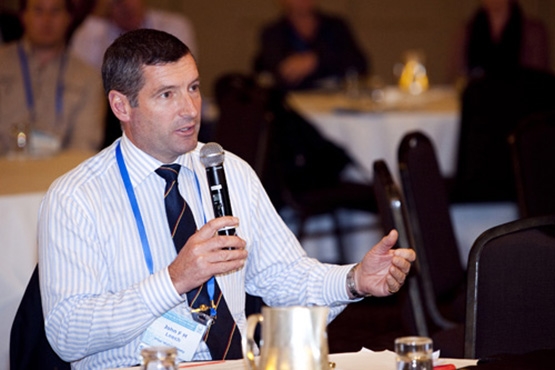
John Leech speaking at a conference
In his pursuit of creating a mindset about safety he has spoken out strongly against disregard for the wearing of lifejackets by yachtsmen and women and there has been a noticeable change in attitudes in this regard, including by myself. I now never allow anyone aboard my boat for racing without a lifejacket. I carry extra lifejackets aboard in case people arrive without them. This is not to make sailing unpleasant or to stress danger instead of enjoyment. It is to value life and enjoyment and to ensure that everyone who sails on our family boat, cruising, racing or just out for a day, returns safely.
John would not have endeared himself to everyone in the fishing industry either when he campaigned for the wearing of ‘personal flotation devices,’ a generic term used to describe lifejackets and buoyancy aids. However, he persevered and there too a change has been noticed, with less of the old adage in fishing that if a man fell into the sea it was better to drown than to fight for life.
“It is vital to wear a buoyancy aid or a lifejacket when afloat or if your activity takes you near the water,” he has often told me.
John is also a sailor himself and a Race Official, so he knows the water from many aspects. His dedication has led to the introduction of safety regulations for different type of craft and so, when he makes a point it is for a good reason and should be listened to. On this week’s edition of my radio programme THIS ISLAND NATION he discusses the winter flooding and the effects in County Galway where he lives himself:
“For those of us who have to live and operate in a flooded area like myself who lives in South East Galway or my mother’s house on the banks of the Shannon in Athlone, there are some very simple measures that we should all take,” he says on the programme, recommending the wearing of lifejackets “in all aquatic environments.”
He speaks favourably of those seen wearing lifejackets, “however quite a few people still don’t wear them, perhaps they think it will never happen to them and this culture is what prevents many people from wearing them.”
He refers to the Taoiseach and the Minister for the Marine, Simon Coveney, filmed on television in flooded areas wearing lifejackets “and in the case of Minister, a dry suit, which demonstrates his awareness of the risks surrounding flood waters. Being a keen sailor he is aware and understands the risks of drowning in these situations.”
Then he makes a point about Tanaiste Joan Burton seen falling out of a canoe in County Kilkenny. For many people it became an incident occasioning some hilarity, the water depth seeming to be only about a foot and there were many comments as to why she had not walked the area rather than going into a boat.
John – and I credit to his courage for saying so and pointing the incident out – takes a view about water safety in this regard and I support what he said on my programme:
“What was very disappointing to me was to see our Tánaiste and Minister of State Ann Phelan fall out of a canoe with no lifejackets on. They were demonstrating very poor example to our Island Nation. Then, not all of our politicians have the necessary awareness and training to understand the daily risks of working and living on an island nation with thousands of floods, streams, rivers lakes, ponds and canals to drown in.”
What John has said may not go down well in some political circles. That would be regrettable. The incident may have originated from a publicity photo opportunity stunt conjured up by some public relations or media official which was ill thought-out and rebounded on them. John Leech as Chief Executive of Irish Water Safety is correct to point it out. The Tanaiste and the Minister of State should not have been in the boat without lifejackets. It was a bad example. It was disregard for water safety.
Well done John Leech for your courage in highlighting it.
I hope that the two Ministers concerned, senior and junior and their advisor or advisors responsible for the publicity stunt, will admit their mistake and never again go afloat without a lifejacket.
It is the lesson, as John has often told me, to always wear a lifejacket.
• Listen to John on the programme above
Should a bather step on a weever fish then the pain is excruciating as the spines embed into the human flesh and discharge their poison. (SEE RELATED VIDEO BELOW)
The pain is at its most intense for the first two hours when the foot normally goes red and swells up, and then it may feel numb until the following day with irritation and pain that may last for up to two weeks. Sometimes, the spine breaks off in the foot and it will cause discomfort until it is removed. You won't see a Weever fish easily but you will know it's there if you are unfortunate enough to stand on one since its back has a defensive sting mechanism. The sting can be very painful but will not cause permanent damage.
The poison is a type of protein and is heat labile. Most reports of stings occur during the month of August. This does not mean that this fish are particularly prevalent inshore during this month but merely reflects the greater numbers of bathers as the sea temperature reaches the highest of the year. The only death on record after someone being stung by a Weever occurred as long ago as 1927, when an angler suffered multiple stings whilst fishing off Dungeness in the UK.
The mouth itself is in an unusual position on its head, oblique and almost vertical and contains some of the most sharp and vicious looking teeth in the undersea world. Luckily it only reaches about 15 cm long.
The Weever has to be quick to catch is prey though, and for half a metre it has a fair turn of speed, before sinking to the sea floor. This fish does not have a swim bladder, the device used by most bony fish to keep buoyant.
The species found in shallow waters is called the Lesser Weever with the scientific name of Echiichthys vipera. There is a larger species called the Greater Weever, Trachinus draco, found in deeper water and occasionally seen on the fishmongers slab. The word 'weever' was first found used in the English language during the 17th century and comes from the Old northern French word 'wivre'.
One danger is that it can cause anaphylactic shock or allergic reaction and people have been known to die.
People who have been stung should take painkillers and if they develop an allergic reaction to the sting, a course of antihistamines is recommended
Seek assistance from a lifeguard who are all qualified first aiders.
Aspivenin syringes can painlessly draw out poison from the wound.
If you are away from a beach with lifeguard support, as soon as possible get the area which has been stung, invariably the foot, into hot water, this increases the blood flow which assists natural cleaning and healing, the heat also helps to breakdown the poison. The water needs to be over 40 degrees Celsius to be of any benefit in breaking down the poison.


























